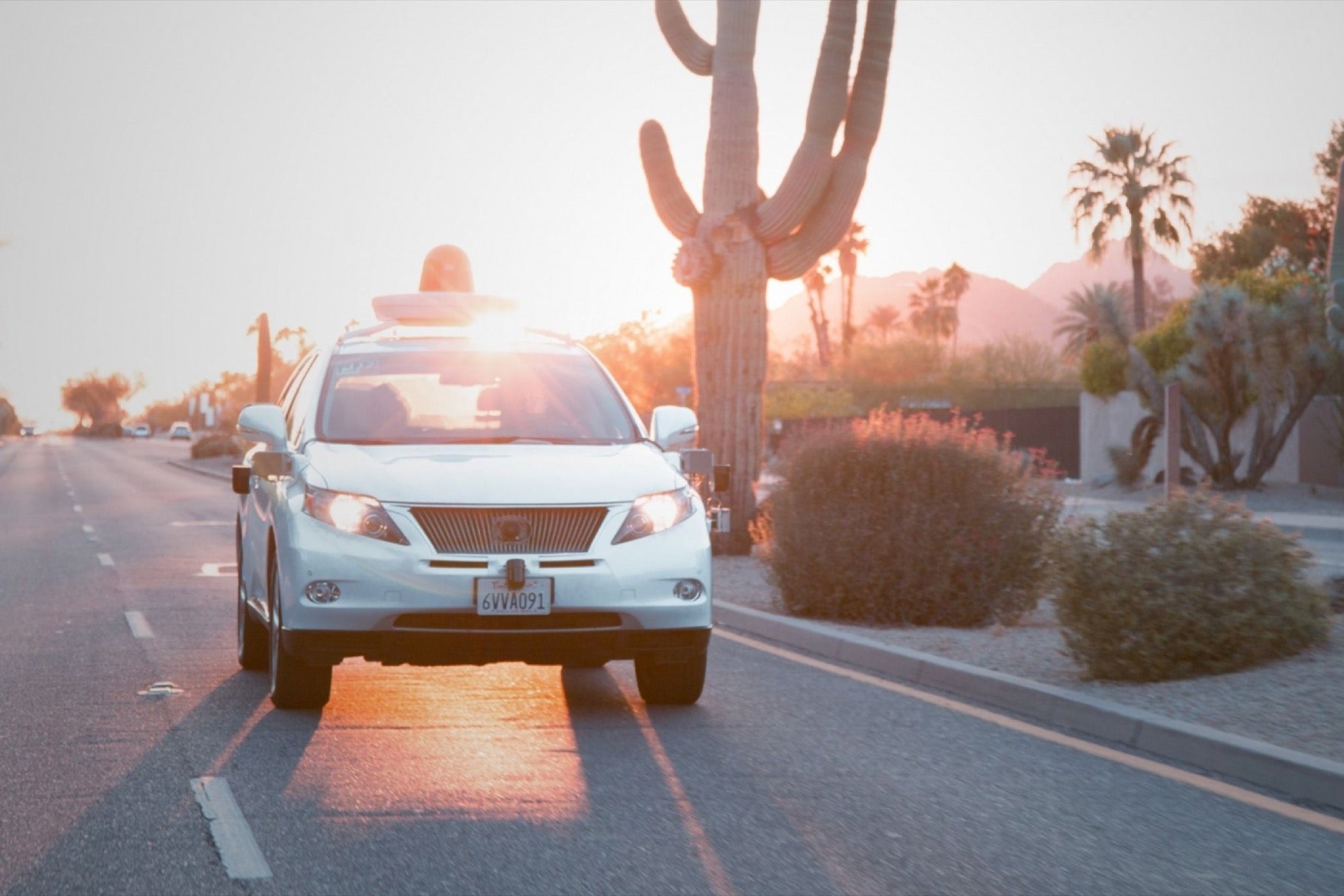Google: Our Self-Driving Cars Are Nice to Cyclists The search giant says it is teaching its cars to share the road.
By Tom Brant
This story originally appeared on PCMag

Google is teaching its self-driving cars to share the road with cyclists, the company said in a monthly report on its autonomous vehicle testing program.
The cars' software can recognize cyclists' hand signals and is programmed to give bicycles a wide berth when the car is passing them, among other measures to minimize the risk of a collision.
"Through observing cyclists on the roads and private test track, we've taught our software to recognize some common riding behaviors, helping our car better predict a cyclist's course," the report said.
Besides recognizing hand signals and maintaining an adequate distance from a bicycle, Google's self-driving cars can also see and avoid bikes at night, as well as steer around unpredictable cyclists who are riding against the flow of traffic.
Google's campus, where some of its self-driving car tests are performed, has long been a hub of cycling activity. The company has more than 1,000 bikes painted in its green, blue, red and yellow colors available for employees to use. The report indicates that more than 100 Google employees rode around in a circle to train the self-driving cars' bike-recognition capabilities.
"Our cars recognize cyclists as unique users of the road, and are taught to drive conservatively around them (it helps to have a number of avid cyclists on our engineering team!)," the report said.
Google often uses its monthly self-driving car reports to tout its vehicles' ability to be courteous to other road users. Its May report, for instance, explained how the cars are programmed to blow their horn in the most cordial way.
Still, Google self-driving cars have had several fender benders. Two of them were involved in collisions in Austin, Texas, in June, according to the report. One was sideswiped by another vehicle and the other was rear-ended while it was stopped at a red light, though both were low-speed collisions that did not cause any injuries, the company said.











